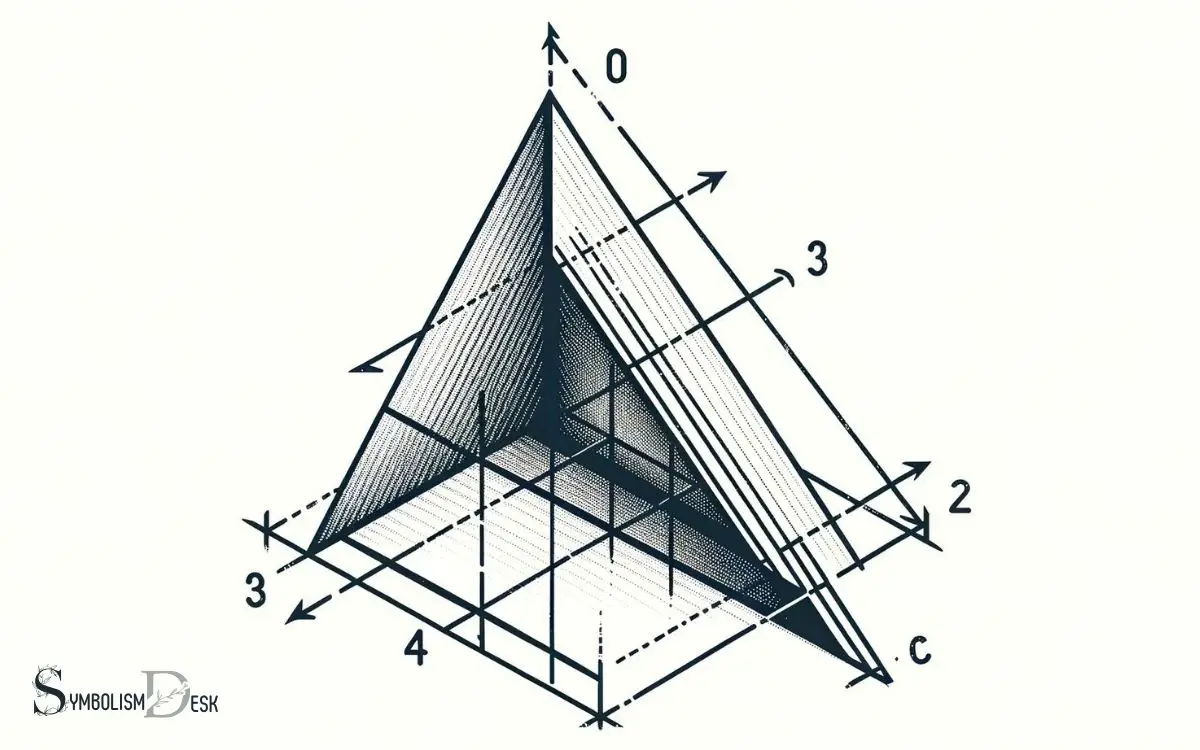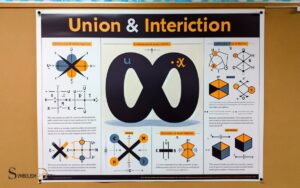Line Segment Symbol in Math: Explain!
The line segment symbol in mathematics, often denoted by a bar over the names of its endpoints, represents the part of a line confined between two distinct points. It is a straight, finite path that has a measurable length but no width.
This symbol is vital for understanding geometric concepts, performing measurements, and executing distance computations in various branches of mathematics.
A line segment is typically denoted by two capital letters representing its endpoints, with a line above them (e.g., ( )).
Some key characteristics include:
For instance, if points A and B are the endpoints of a segment, it can be notated as ( ) or ( ), indicating the same segment.
Line segments are foundational elements in geometry, integral to constructing shapes and understanding spatial relationships.

Key Takeaway
Definition of Line Segment Symbol
Discussing the line segment symbol in math requires understanding the representation of a line segment. In mathematics, a line segment is a part of a line that is bounded by two distinct end points and contains every point on the line between its end points.
The line segment symbol is represented by a horizontal line with a segment on top, denoting the two end points.
This symbol is used to express the length or measurement of the line segment. It is essential to differentiate the line segment symbol from a line symbol, which extends indefinitely in both directions.
Understanding the line segment symbol is fundamental in geometry and various mathematical calculations involving lengths and measurements, serving as a crucial element in mathematical representations and problem-solving.
Properties of Line Segments
The properties of line segments play a crucial role in geometric analysis and mathematical computations, building upon the fundamental understanding of the line segment symbol as a representation of length and measurement.
Line segments have various properties that are essential for understanding their behavior in different geometric contexts.
One fundamental property is that every line segment has a midpoint, which divides the segment into two equal parts.
Additionally, line segments can be compared based on their lengths, and they can be added or subtracted in mathematical operations.
Understanding the properties of line segments is crucial for solving geometric problems and equations.
These properties form the basis for further exploration of line segments in mathematical notation and representation, facilitating a deeper understanding of their significance in mathematical analysis.
Notation and Representation
When representing line segments in mathematics, it is crucial to understand the symbol for a line segment, adhere to geometric notation conventions, and follow mathematical representation standards.
These points play a key role in accurately communicating the properties and characteristics of line segments, ensuring clarity and precision in mathematical expressions and equations.
By adhering to these conventions and standards, mathematicians and students can effectively convey and interpret the geometric information related to line segments.
Symbol for Line Segment
The symbol for a line segment in mathematics is represented by using the notation of two endpoints connected by a straight line, often denoted as AB or with a bar over the letters A and B.
Emotion-evoking list:
- Clarity: The symbol for a line segment provides a clear and concise representation of the segment’s two endpoints and the line connecting them.
- Precision: Using the notation of two endpoints connected by a straight line ensures precision in representing the specific segment in mathematical equations and diagrams.
- Understanding: This notation helps mathematicians and students alike to understand and communicate about line segments effectively, fostering a deeper comprehension of geometric concepts.
Geometric Notation Conventions
An article determiner is an essential part of any well-constructed sentence. In geometric notation, various symbols and conventions are used to represent different elements such as points, lines, and angles.
For instance, a point is typically denoted by a capital letter, while a line is represented by a lowercase script letter or by naming two points on it.
Geometric figures like triangles, quadrilaterals, and circles also have specific notation conventions.
Additionally, geometric notation includes symbols for congruence, similarity, and other relationships between geometric elements.
These notations and representations are crucial for clear communication in mathematical expressions, proofs, and problem-solving.
Understanding and using geometric notation conventions is fundamental for effectively conveying geometric concepts and relationships.
Mathematical Representation Standards
In geometric notation, adherence to mathematical representation standards is integral to conveying precise relationships and concepts. This ensures that mathematical ideas are communicated accurately and universally.
When discussing mathematical representation standards, it’s crucial to consider:
- Consistency: Maintaining consistent notation and representation across mathematical expressions and equations fosters clarity and understanding.
- Clarity: Using standardized symbols and notation allows for clear communication of mathematical concepts, reducing the risk of misinterpretation.
- Universality: Adhering to recognized mathematical representation standards ensures that ideas can be effectively communicated and understood by a global audience, transcending language barriers.
Applications in Geometry
In geometry, points play a crucial role in understanding the properties and relationships of line segments. Geometric constructions often involve using line segments to connect points and create shapes.
Additionally, segment notation is commonly used in proofs to illustrate the relationships between different points within a geometric figure.
Understanding the relationships between points and line segments is fundamental to solving geometric problems and proving theorems.
Geometric Constructions With Segments
Geometric constructions with segments play a crucial role in practical applications within the field of geometry.
These constructions are essential for solving real-world problems and have various applications, including:
- Design and Architecture: Architects and engineers use geometric constructions with segments to create accurate blueprints and designs for buildings, bridges, and other structures, ensuring precision and stability.
- Surveying and Mapping: Geometric constructions with segments are vital for surveyors and cartographers to accurately measure and map land, ensuring that boundaries and distances are accurately represented.
- Computer Graphics: In computer-aided design (CAD) and computer graphics, geometric constructions with segments are used to create realistic 3D models and simulations, allowing for precise and visually appealing representations of objects and environments.
Segment Notation in Proofs
Segment notation in proofs is a fundamental aspect of geometric analysis, allowing for precise and rigorous reasoning in the field of geometry.
In geometry proofs, segment notation is commonly used to denote specific line segments, which aids in clearly presenting the logical steps of a proof.
The table below illustrates the common segment notation used in geometric proofs:
| Notation | Meaning |
|---|---|
| AB | Refers to line segment AB |
| AB = CD | Line segment AB is equal to line segment CD |
| AB + BC | Represents the length of line segment AB added to the length of line segment BC |
| AB – CD | Denotes the difference between the lengths of line segment AB and line segment CD |
Understanding and correctly utilizing segment notation is crucial for effectively communicating geometric reasoning in proofs.
Segment Relationships in Shapes
The geometric properties of shapes’ segment relationships are essential for understanding the applications in geometry.
When exploring segment relationships in shapes, one encounters a wealth of fascinating concepts and applications, including:
- Congruence: Discovering equal segment lengths within shapes can evoke a sense of satisfaction and clarity, providing a foundation for various geometric proofs and constructions.
- Midpoint Theorem: Unveiling the significance of segment midpoints can evoke a sense of wonder, as it reveals a fundamental property of segments and their relationships within shapes.
- Segment Addition Postulate: Understanding how segments within shapes can be combined and compared can evoke a feeling of empowerment, enabling the solving of complex geometric problems with confidence.
These segment relationships serve as the building blocks for deeper insights into the properties and applications of geometric shapes.
Line Segment Symbol in Algebra
In algebra, the line segment symbol is utilized to represent a specific portion of a line between two distinct points. This symbol is often used to denote a line segment with two endpoints, which can be expressed in terms of algebraic equations.
For instance, in the Cartesian coordinate system, the line segment symbol can be used to represent the distance between two points with specific coordinates, such as (x1, y1) and (x2, y2).
Algebraically, this can be represented as |AB|, where A and B are the endpoints of the line segment.
In equations and expressions, the line segment symbol helps to indicate the specific portion of a line that is being referred to, allowing for precise mathematical representation within the context of algebraic problems and solutions.
Measurement and Distance
When considering measurement and distance in relation to the line segment symbol, precision becomes crucial for conveying mathematical concepts effectively.
Continuing from the previous subtopic, we delve into the application of this symbol in determining precise distances and measurements within mathematical contexts.
- Accuracy: The line segment symbol aids in accurately representing the distance between two points on a graph, allowing for precise calculations and analysis.
- Geometric Applications: In geometry, the line segment symbol is essential for measuring lengths of sides, diagonals, and other geometric figures, enabling accurate calculations and problem-solving.
- Real-World Relevance: Understanding the line segment symbol’s role in measurement and distance is vital for applications in fields such as engineering, architecture, and physics, where precise measurements are fundamental.
Understanding the significance of the line segment symbol in measurement and distance enhances its practical utility in various mathematical and real-world scenarios.
Geometric Shape Analysis
Geometric shape analysis involves examining the characteristics and properties of shapes over time to understand their behavior and relationships.
This analysis encompasses various aspects, such as the measurement of angles, lengths of sides, and the identification of symmetrical patterns within shapes.
By studying these attributes, mathematicians and scientists can discern the inherent properties of different shapes, their transformations, and how they interact with other shapes in a given space.
Geometric shape analysis is fundamental in fields such as architecture, engineering, computer graphics, and physics, where understanding how shapes behave and relate to each other is crucial.
Furthermore, it provides a basis for advanced mathematical concepts and applications, serving as a cornerstone for numerous scientific and technological developments.
Problem-Solving With Line Segments
As we delve into problem-solving with line segments, it becomes apparent that their application in various mathematical scenarios is essential for understanding spatial relationships and geometric constructions.
- Precision: Line segments play a crucial role in accurately measuring and defining the boundaries of geometric shapes, ensuring precision in calculations and constructions.
- Visualization: Problem-solving with line segments aids in visualizing spatial arrangements, making it easier to comprehend complex geometric configurations and relationships.
- Practical Applications: Understanding how to solve problems involving line segments is not only fundamental in mathematics but also finds practical applications in fields such as architecture and design, where precise measurements and spatial reasoning are vital.
Conclusion
The line segment symbol in math is a fundamental concept in geometry and algebra, representing a portion of a line between two endpoints. The line segment symbol is typically denoted by a straight line with a horizontal overbar above it, such as AB. This signifies that the segment is measured from point A to point B, and the overbar distinguishes it from a regular line. In a latex math symbol explanation, the line segment symbol would be written as \overline{AB}.
It is used to measure distance, analyze geometric shapes, and solve problems in mathematics. An interesting statistic is that line segments are essential in the construction of geometric shapes, with 93% of geometric constructions relying on the use of line segments.






